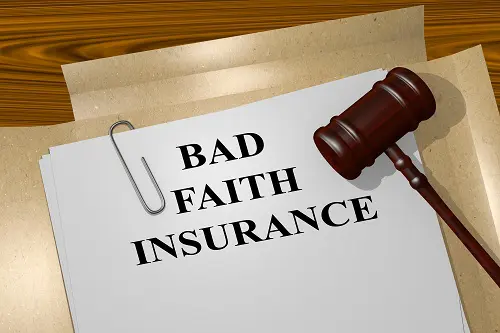
Under the law, an insurance company has an obligation to give its insureds’ interests at least equal consideration to its own interests when investigating, evaluating, and negotiating a claim under the policy. This is due to the unique relationship between an insurance company and its policyholders.
How insurance works (in a nutshell)
Policyholders entrust their money, in the form of premiums, to insurance companies as a way to spread the risk of loss among a group of individuals or businesses. The insurance company’s job is to collect premiums, hold and monitor the money, and distribute it fairly and quickly to those claimants who suffer a covered loss.
The insurance company earns a fee for its work and can invest certain amounts of money while it holds it. But generally, the money is to be held for the benefit of policyholders who need it.
In this sense, an insurance company is similar to a bank. It is for that reason the insurer-insured relationship is considered a special one under the law. Due to that special relationship, an insurance company has specific obligations and duties to its policyholders, all of which arise from the foundation that an insurance company cannot put its own interests before those of its policyholders.
If an insurance company fails to put its policyholders’ interests first, and the policyholder suffers some kind of damage as a result, the policyholder can file a “bad faith” claim against its insurance company.
What is a bad faith claim?
A bad faith claim alleges that the insurance company acted in some way that violated these principles, including delaying or failing to investigate a claim, or intentionally delaying or failing to settle a claim. A bad faith claim seeks damages from the insurance company for these improper claim handling practices.
In Illinois, there are two types of potential insurance claimants: the first-party claimant and the third-party claimant.
First-party bad faith insurance claims
A first-party claimant is a person making a claim who is the policyholder that purchased and pays premiums for coverage. A common example of a first-party claim is a homeowner who makes a claim under his own homeowner’s insurance policy for wind damage to his house caused during a storm.
Third-party bad faith insurance claims
A third-party claimant does not have any direct relationship with the insurance company but makes a claim under one of that company’s policies.
For instance, the driver of a car that is rear-ended at a stoplight can make a claim for injuries against the driver who struck them. In the situation, the at-fault driver’s insurance coverage would apply.
The injured driver making the claim did not purchase insurance from this insurance company, does not pay premiums to them, and has no relationship with the company before the car accident. Because he is not one of the two parties to the insurance agreement, the injured driver is known as a third-party claimant.
Both a first-party claimant and a third-party claimant may file a bad faith claim against an insurance company for improperly denying a claim or failing to settle a claim, although the rules for each varies.
How do bad faith claims work in Illinois?
In Illinois, first-party bad faith claims are governed by a statute but are most often accompanied by either a declaratory judgment or breach of contract lawsuit. A declaratory judgment claim asks a judge to rule, or “declare,” that coverage did or did not apply to a certain claim. A contract claim alleges that the insurer’s failure to pay the claim under the policy amounts to a breach of the agreement.
Under either of these methods, the compensation available to the insured/policyholder is restricted to the policy limits. A successful policyholder will recover the value of his claim, but no more.
However, if the policyholder can prove that the insurance company’s refusal to pay the claim was “vexatious and unreasonable,” the insured may be entitled to additional damages under Illinois’s bad faith statute.
The statute serves as an additional penalty to deter insurers from treating policyholders unfairly. It also allows for the recovery of reasonable attorneys’ fees and costs. However, the “penalty” amount is limited to a maximum of $60,000, no matter how egregious the insurer’s conduct.
Most Common Bad Faith Claims
The most common type of third-party bad faith claims happens when an insurance company fails to settle a claim within an insured’s policy limits.
For example, let’s say the driver of a vehicle who is insured with a policy limit of $100,000 causes an accident that results in over $300,000 in damages to the other driver. The plaintiff expresses a willingness to settle the case for the $100,000 limit, but the insurance company refuses to accept the offer without a reasonable basis for doing so.
The case may proceed to trial, resulting in a verdict far exceeding the amount of the coverage available, jeopardizing the policyholder’s personal assets. The amount awarded in excess of the policy limit is known as an “excess verdict.”
In that situation, the policyholder may have a bad faith claim against its insurance company for the amount of the excess verdict. The policyholder will often then transfer their rights to proceed against the insurance company to the injured claimant through a process known as “assignment.” The assignment of a bad faith claim can be accomplished by a voluntary agreement or may be compelled by an order of the court.
Do you have a bad faith claim? Contact us today.
If you have a question about first-party or third-party bad faith claims, contact our attorneys today at (312) 578-9501. You can also complete the form at the bottom of this page.
Schedule Your Free Consultation Today



